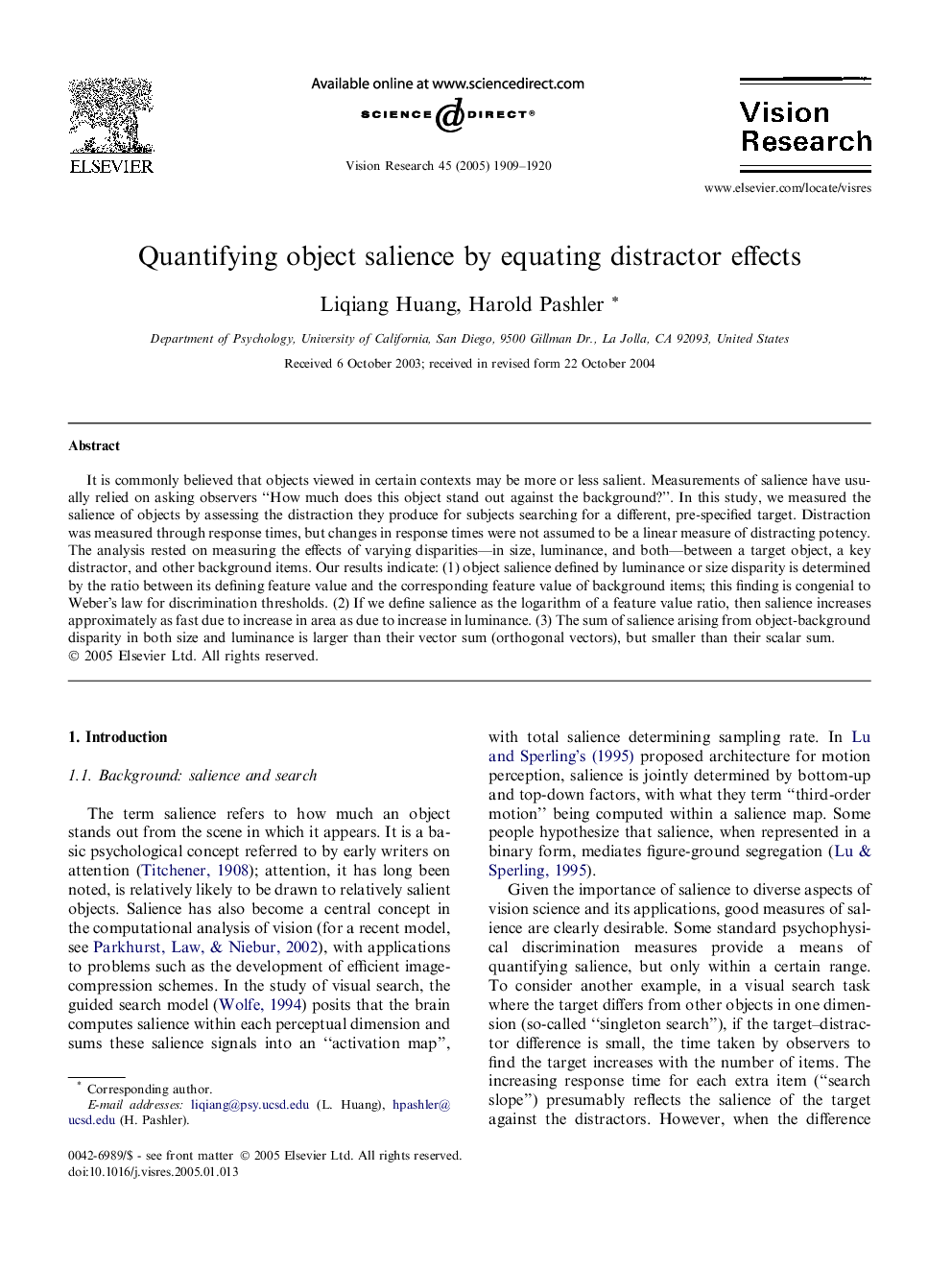| Article ID | Journal | Published Year | Pages | File Type |
|---|---|---|---|---|
| 9348426 | Vision Research | 2005 | 12 Pages |
Abstract
It is commonly believed that objects viewed in certain contexts may be more or less salient. Measurements of salience have usually relied on asking observers “How much does this object stand out against the background?”. In this study, we measured the salience of objects by assessing the distraction they produce for subjects searching for a different, pre-specified target. Distraction was measured through response times, but changes in response times were not assumed to be a linear measure of distracting potency. The analysis rested on measuring the effects of varying disparities-in size, luminance, and both-between a target object, a key distractor, and other background items. Our results indicate: (1) object salience defined by luminance or size disparity is determined by the ratio between its defining feature value and the corresponding feature value of background items; this finding is congenial to Weber's law for discrimination thresholds. (2) If we define salience as the logarithm of a feature value ratio, then salience increases approximately as fast due to increase in area as due to increase in luminance. (3) The sum of salience arising from object-background disparity in both size and luminance is larger than their vector sum (orthogonal vectors), but smaller than their scalar sum.
Related Topics
Life Sciences
Neuroscience
Sensory Systems
Authors
Liqiang Huang, Harold Pashler,
